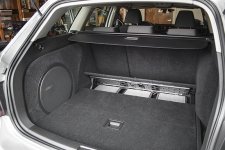I have an amp that coming on 30 years old now. It could die any day and not owe me a nickel. Its an old Jeff Rowland model 8T; 250 watts, class AB but with some initial watts in A (I don't know the spec on that but pretty sure that is the case).
Rowland doesn't make A/B amps any longer and switched to D I'd say 10 years back maybe but their prices are, well shocking.
Anyhoodles, I was asking Borresen about their speakers and what kind amps might work best. They of course mentioned their own Aavik line which are also some flavor of class D. What was interesting though was the comment the reply came back with included this "I wouldn’t look at Class A/B any longer. Those designs are based on output devices that are more the 30 years old in construction. In my opinion, these designs has been surpassed by Class-D amplifier several years back. You can still get the best of the best from pure Class-A amps but they are very expensive then."
So I am thinking, well, even relatively normal AB amps still do a certain amount in class A so certainly they can't be obsolete. Just from the top of my head for instance, Pass Labs makes a 260 watt class AB amp but its first 34 watts of output are in class A. They make a 600 watt behemoth has its first 100 watts in class A. Bryston makes a nutter level 1000 watt amp and its first 25 or so I believe is in class A.
So really, is class D this new wonder or is this just same thing done differently? I gather, in theory, they can be done cheaper via class D (Jeff Rowland excluded as well as Aavik) and smaller and with less power consumption, but sound quality wise, are they really 'all that'? I have read reviews on some and they certainly are not uniformly praised as the b all and end all of amplification.
Current thoughts? Any electrifying ideas? Are they shockingly good or no? hehe, electric puns free of....charge!
Rowland doesn't make A/B amps any longer and switched to D I'd say 10 years back maybe but their prices are, well shocking.
Anyhoodles, I was asking Borresen about their speakers and what kind amps might work best. They of course mentioned their own Aavik line which are also some flavor of class D. What was interesting though was the comment the reply came back with included this "I wouldn’t look at Class A/B any longer. Those designs are based on output devices that are more the 30 years old in construction. In my opinion, these designs has been surpassed by Class-D amplifier several years back. You can still get the best of the best from pure Class-A amps but they are very expensive then."
So I am thinking, well, even relatively normal AB amps still do a certain amount in class A so certainly they can't be obsolete. Just from the top of my head for instance, Pass Labs makes a 260 watt class AB amp but its first 34 watts of output are in class A. They make a 600 watt behemoth has its first 100 watts in class A. Bryston makes a nutter level 1000 watt amp and its first 25 or so I believe is in class A.
So really, is class D this new wonder or is this just same thing done differently? I gather, in theory, they can be done cheaper via class D (Jeff Rowland excluded as well as Aavik) and smaller and with less power consumption, but sound quality wise, are they really 'all that'? I have read reviews on some and they certainly are not uniformly praised as the b all and end all of amplification.
Current thoughts? Any electrifying ideas? Are they shockingly good or no? hehe, electric puns free of....charge!





